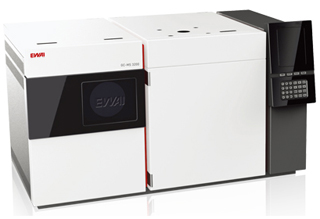Pesticide Residue Problem & Analysis of Vegetable, Fruit, Tea

The Taiwanese famous cook, master Aki said, "No holes on the vegetable, it could be too much pesticide residues". It points out the concerns and fears of the consumers, who care about the pesticide residue issues related to the food security. However, the consumers are actually helpless and powerless in this issue. Even those organic fruits and vegetables, to which consumers considered as safer foods, due to the environment pollution, they rarely have zero pesticides, neither. Besides, organic agriculture is considered for soil and water conserving and for ecological balance, rather than food safety.Therefore, consumers can only do their best to clean the vegetables and fruits before eating. Or listen to some useless folk prescriptions distributed among people, which can make them 'feel' safer or 'feel' better.
To the pesticide residues issues, the governmental organization who owns powers and responsibilities in Taiwan are "Council of Agriculture" and "Ministry of Health and Welfare (MOHW)". In order to define the standard of pesticide residues that people can follow up, MOHW officially announced the regulations of "pesticide residue tolerance standard" in October 2008. This standard defines the upper limit of pesticide that remains on the vegetables, fruits and the amount that can be detected by the instruments. Besides, the standard also listed the acceptable amount of pesticide and those can be ignored. This way, everyone has a standard to follow up.
However, either master Aki or the general public, these professional nouns of pesticide are difficult to understand, rather than the unit of pesticide in "ppm". Let's consider those vegetables and fruits that are typically have over-spec pesticide residues, include: apples, strawberries, grapes, peaches, peppers, peas, beans, tomatoes, cucumber, bitter gourd, etc. These fruits and vegetables have to be washed carefully by water before eating, and clean the most of the pesticides from the surface.
By the more aggressive actions, we can apply the rules onto the source (the vendors), and combine the inspections instruments. By the guidance to the farmers, the filter by the food wholesales, random inspection onto the food distribution channels, the standard can be implement to the source of vegetables, fruits, and teas. So, these fruits and vegetables have under a certain of safety range before hands over to the consumers. Currently, a liquid chromatography or a gas chromatography attached with a mass spectrometer is the most commonly way in the laboratory in detecting the pesticide residues. (hereafter refereed to LC-MS, GC-MS)
The role of a LC or GC, mainly the separation of the chemical mixtures, the substance mixture will get through the column of the LC/GC, after being separated, and leave the column in a queue to the detector. The detector measure the time, and identify the amount of these ingredients and identify them. The role of the mass spectrometer is measuring the molecular mass, by identify the charge-mass ratio, which presents the different characteristics of the ions. By concatenating these two instruments, one can improve the accuracy of identification.
To be a professional scientific instrumentation supplier, ACTTR will keep introducing the latest technology of LC-MS, GC-MS, MASS, and related sample preparation equipment, such as high-throughput grinder. We also have various high purity precious standards for different instruments.
ACTTR Technology is the most aggressive & the most professional instrument of spectrometer distributor, agent, reseller, in Taiwan.


